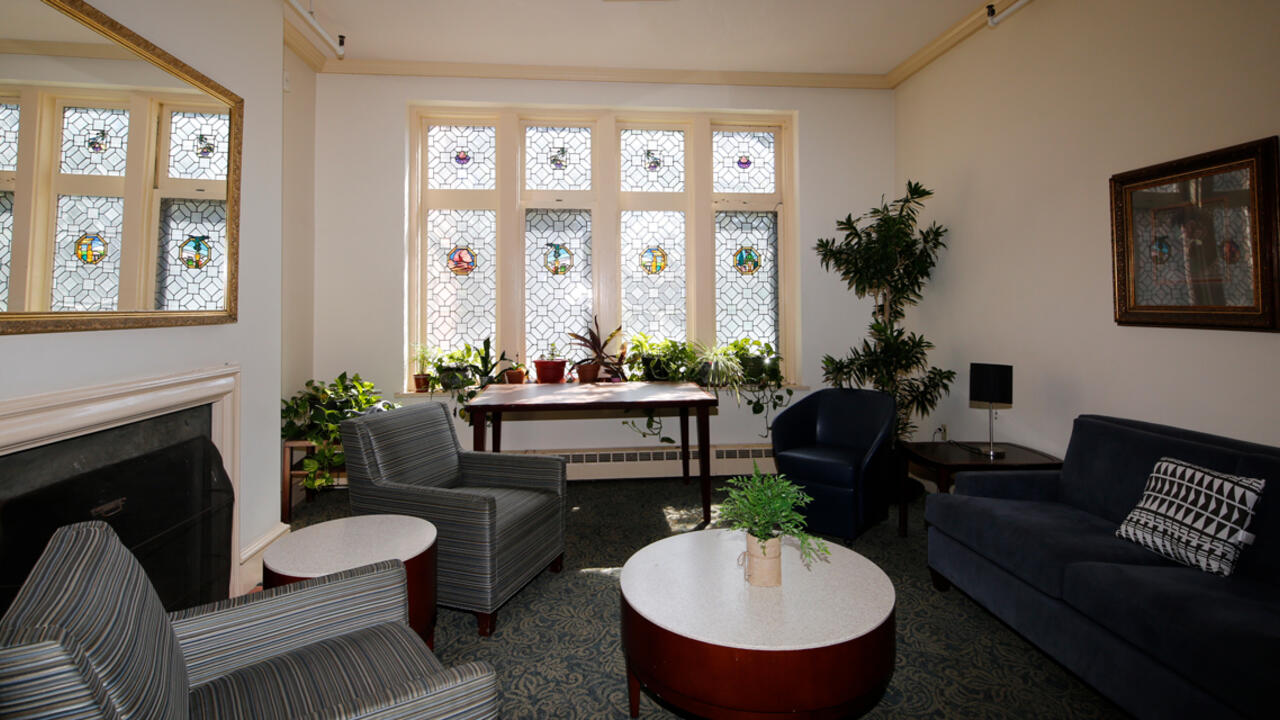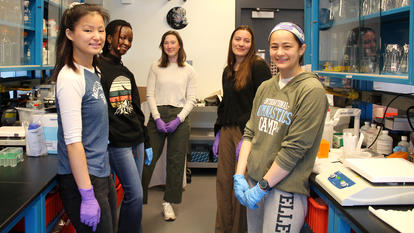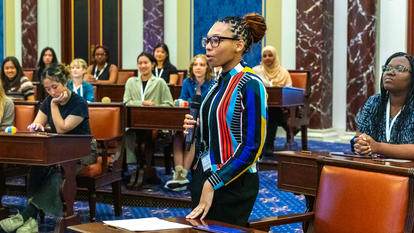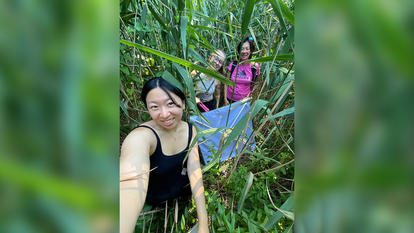An Inside Look at Summer Renovations on Campus

Wellesley’s Facilities Management team takes advantage of summer break to tackle key campus projects and prepare for the next academic year.
The Daily Shot caught up with Michelle Maheu, director of planning, design, and construction at Wellesley, to ask about planning and executing these projects and what students can expect to see when they return to campus.
Q: What were some of your team’s main goals for the summer break?
Michelle Maheu: Our summer work focused on repairs and upgrades at several residence halls, Founders Hall classrooms, and other miscellaneous renovations throughout campus, like classroom and office improvements at Jewett Arts Center, repairs to the Sports Center pool, and upgrades to the mechanical system at the observatory, to name a few.
Our campus has about 100 buildings and 2.5 million square feet of space, which is a lot to take care of. And particularly given the historic nature of our buildings, there is an ongoing list of maintenance and renovation needs. Facilities identified the needs of our buildings in what’s called a condition assessment, which is used to develop our five-year plan. Each specific project starts design and pre-construction work about a year in advance of the construction.
Our goal is always to complete our projects on time and on budget. Additionally, we strive to meet the intended design and program elements that are established in the planning stage. The inclusion of Residential Life staff is important for design as they understand the changing needs of students, which then drives programs and space design in the buildings. We also review finishes and design with faculty advisors and members of the College’s Senior Leadership Team.
Q: What’s most difficult about planning and executing residence hall renewal projects? How do you decide what to focus on?
Maheu: There’s always more work than we can accomplish with available funds and time. To identify the work, we use condition assessments, which I mentioned before. These reports outline the overall condition and needs of our buildings. And then we work with Student Life staff to understand programmatic goals and student needs.  Together, we prioritize the list of needs into a scope of work that meets the budget and schedule limits for a certain time period.
Together, we prioritize the list of needs into a scope of work that meets the budget and schedule limits for a certain time period.
An example of overlap between program and maintenance is student common rooms, such as the Green Room that was just renovated in Cazenove Hall this summer. From a maintenance perspective, we need to be sure the pipes are not leaking, the lights are working, and the kitchen appliances are in safe working order. From a programmatic perspective, this is an important community space for students. Our design made sure to offer a wide variety of uses, such as cooking, studying, or just hanging out.
Q: What are some of students’ top concerns regarding the work you do?
Maheu: Students want safe, dry, and comfortable living environments, which is completely understandable! Their concerns are often quite basic and reasonable, such as a new shower curtain or addressing peeling paint.
Sometimes students won’t reach out or report these basic needs, but we definitely encourage them to work with the leaders in their halls to report facility needs via our online Service Request tool. If we don’t know about these smaller issues that may have an impact on students’ enjoyment of their living spaces, we can’t address them.
Q: In addition to using the Service Request tool, if students do have facility concerns, particularly larger ones, how can they connect with someone who can answer their questions?
Maheu: Students are encouraged to work with their hall leaders to report all ongoing problems and needs. Student Life and Facilities work together collaboratively and meet regularly.
Students are also encouraged to talk with student leaders in their residence halls. These leaders meet with Student Life staff and have information about upcoming work or why certain things need to be addressed at certain times. Student leaders also provide feedback to Student Life staff about what upgrades they would find most helpful. In the past, folks from Student Life held meetings in the res halls during “tea” to discuss upcoming plans and talk about student needs.
We understand that some situations students encounter can make the status of campus maintenance, and projects, unclear. For example, there was once something students referred to as a “steaming pit” on campus, which was just a broken pipe underground that we had to wait for spring to fix because of the snow. While it may have seemed odd, it was never a safety concern for our community. And as I’ve said, we always encourage students to reach out to us—even for oddities they may come across on campus.
Q: What do you want students to know about summer projects or residence halls in general?
Maheu: I'd like the students to know that we are aware that many of the halls need improvements. It is a large undertaking for the College, and we do have a plan in place that we are working on every year—in fact this summer marks the second year of our plan.
This summer, we saw large-scale improvements in Cazenove, where we upgraded kitchenettes, lounges, living rooms, and the Green Room. At Stone Davis, we replaced all flooring material throughout the hall, and painted. Homestead and Instead received a much-needed upgrade to the exterior, including a new roof and all new paint and trim on the house. The roof was also replaced at Shafer Hall, along with interior paint.
We will continue improvements over the upcoming summers, and we encourage feedback on what would improve students’ living experience throughout the year.
Photo: A look at a newly renovated living space in Pomeroy Hall.
Photo (inset): Cazenove Living room saw major adjustments this summer including upgraded kitchenettes, lounges and living spaces, much like this one.



